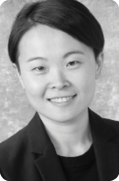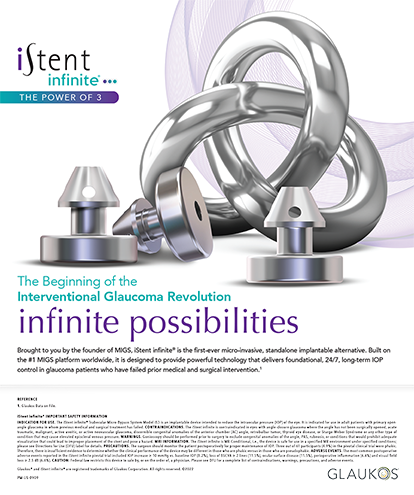
The potential financial rewards in the antiaging marketplace offer a welcoming incentive for those interested in providing these services. More than ever, patients are willing to pay out of pocket for treatments that make them look younger. In 2013, the global antiaging market was worth an estimated $260 billion.1
The financial aspect aside, providing antiaging services can have a meaningful impact on patients’ lives. Our society has never quite accepted aging as a fact of life, and the marketplace offers an abundance of over-the-counter products, injections, and treatments for those wishing to defy time. The trend is to create a fresh look with rejuvenation. Maintaining a natural look is the focus. Much of the potential for eye care providers to enter the aesthetics space has focused on how this market can help the bottom line. More emphasis, however, could be placed on the fact that helping patients feel better about their appearance can be extremely rewarding for them as well as their provider.
THE SCIENCE OF AGING
Biological Process
Aging occurs due to both biological processes and environmental factors. Overall, the contours of the human face are defined by the structure of the bony skeleton, with texture provided by the overlying soft tissue—primarily muscle and fat. As humans age, gravity, soft tissue maturation, skeletal remodeling, muscular facial activity, and changes caused by solar exposure contribute to the development of lines, wrinkles, contour irregularities, and sun-related skin damage.2
Different effects of these processes occur in the three regions of the face. In the forehead and brow region, the most prominent sign of aging is the descent of the brow resulting from loss of tissue elasticity, bone resorption, gravity, and as a consequence of a lifetime of facial expressions.2 Excess skin of the upper and lower lids along with periocular wrinkles add to the aging effects in this region. In addition to these changes, a combination of skin atrophy and weakening of the orbital septum leads to herniation of the intraorbital fat and the creation of “mounds.” The signs of aging become more pronounced with the addition of glabellar frown lines and forehead lines in the upper region.
Within the midface, signs of aging manifest as the bony orbit expands, changing the overlying soft tissue and resulting in an irregular contour.3 In the lower face and neck area, the most prominent feature of aging is the development of the submental fat pad leading to the development of jowls and loss of definition along the jaw lines
Skin Habits Matter
Although the aging signs appear much later in life, good skin habits in the early years can lessen many of the consequences. Wrinkles around the eyes from sun damage can start to manifest as early as the third generation of life, but behaviors such as wearing sun protection, thorough makeup removal without abrasives, the use of noncomedogenic products and daily moisturizers are easily relatable for individuals in their 20s. The early signs of aging can be treated and further damage delayed by intervening in a thoughtful manner. A good daily skin care routine is crucial. This may include the incorporation of collagen-boosting, vitamin C-rich serums into the daily routine to help restore natural skin tone and exfoliation products to help reduce sebaceous glands that create enlarged pores.
EDUCATING ON PREVENTION
Lifestyle Modifications
Perhaps the simplest way for eye care providers to become involved in anti-aging medicine is to engage patients in informative conversations. These conversations should center around the benefits of lifestyle modifications that benefit the health of the face and the eyes. That conversation can, for instance, include the topics of smoking cessation and maintaining a healthy weight. The numerous toxins of cigarettes reduce the natural regenerative properties of the skin, accelerating the formation of wrinkles. The repeated motion of smoking can accelerate the formation of fine lines around the mouth. Both drastic weight gain and loss can cause dramatic aging changes to the face. Maintaining a steady weight reduces the dynamics of the skin elasticity reducing wrinkle formation.
Nutrition
A central construct in educating patients about aging is to convey that there are steps one can take to restore or protect the skin’s natural regenerative properties. This is a concept many eye care practitioners are familiar with from the dry eye space, where assuring the maintenance of homeostasis functions as a long-term treatment and prevention strategy. Talking about nutrition—something that many eye care practitioners already do—is another way to broach the antiaging conversation. Omega-3s present in fish, avocados, and certain plants enhance the skin’s ability to create collagen and permit the cells to regenerate. In a similar vein, proper hydration—drinking 8 to 10 glasses of water a day—helps keeps the dermis and epidermis hydrated to stave off aging signs.
Ultraviolet Protection
Speaking of skin protection, the use of sunscreen and ultraviolet-protecting sunglasses can also be part of the conversation. Eye care providers can also easily educate patients about eyelid hygiene, which can include the use of skin care products to help maintain proper moisture and lubrication.
PROCEDURES AND TREATMENTS
There is a wide expanse of services, procedures, and antiaging treatments that eye care providers can offer to patients, all depending on one’s comfort level and interest. If educating about preventive strategies and healthy habits is a good entry into the antiaging field, it is also a natural portal into conversations about treatments that may be appropriate to address patients’ issues.
Natural Products to Injections
Suggesting products or even making them available in the office is likely the easiest first step providers can make. I am an advocate of using natural products, such as plant-based moisturizers, but it is also important to recommend products that are hypoallergenic, especially for patients with sensitive skin. From there, it is not difficult to start thinking about nonsurgical options, including onabotulinumtoxinA toxin (Botox; Allergan) and injectable hyaluronic acid, to provide a more youthful appearance.
There are many potential applications for using injectables around the face for antiaging purposes, although not all patients should qualify. Overall, the use of fillers and neurotoxins in the periocular region is safe, but the long-term implications from use in younger patients are not well understood. The mechanism of onabotulinumtoxinA is to inhibit the neuromuscular junction, which may lead to atrophy over time with repeated exposure, and especially if the body develops immune responses to the toxin.
Lasers
Other treatments, such as the use of various laser platforms, may be more appropriate for early aging signs and may avoid the potential for muscle atrophy if they are treating the skin at a more superficial layer. Many ophthalmologists will already be familiar with the application of lasers in ocular disorders and will therefore be somewhat comfortable with transitioning to using a CO2 laser or even intense pulse light therapy to address pigmentation issues, hemangioma lesions, and facial rosacea. Offering these kinds of services obviously entails a larger capital commitment than most other antiaging offerings, and so it may be prudent to think about their value in terms of whether and how they will add to patient care.
CONCLUSION
The changing financial landscape within eye care has led providers to explore new offerings in hopes of attracting new patient types. Not only do aesthetics provide burgeoning opportunities to address patients’ concerns about and unease regarding aging, they also offer myriad opportunities for a practice to grow financially. Yet, as is true of most services that are added to an eye care practice, there should be justifiable benefit to patients that outweighs the time, effort, and resource commitment necessary to launch a new service. When it comes to antiaging medicine, those opportunities abound, as helping patients counteract the effects of time and making them feel better about their appearance and wellness provides nearly immeasurable benefit.
1. Anti-Aging Products and Services: The Global Market. May 2009. BCC Research, Wellesley, MA. www.bccresearch.com/market-research/healthcare/antiaging-products-services-hlc060b.html. Accessed June 26, 2015.
2. Zimbler MS, Kokoska MS, Thomas JR. Anatomy and pathophysiology of facial aging. Facial Plast Surg Clin North Am. 2001;9(2):179-187.
3. Zide BM, Jelks GW. Surgical Anatomy of the Orbit. New York, NY: Raven Press; 1985:13-32.




